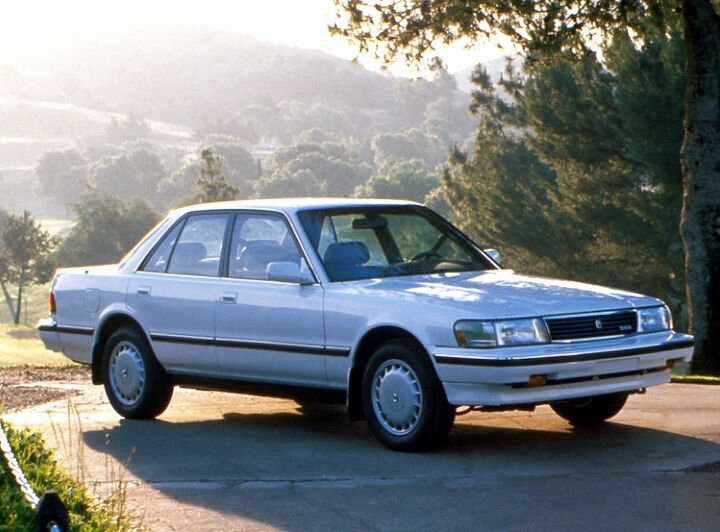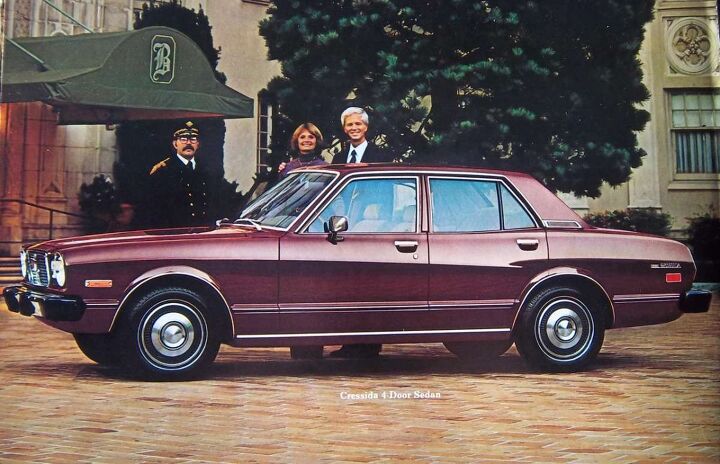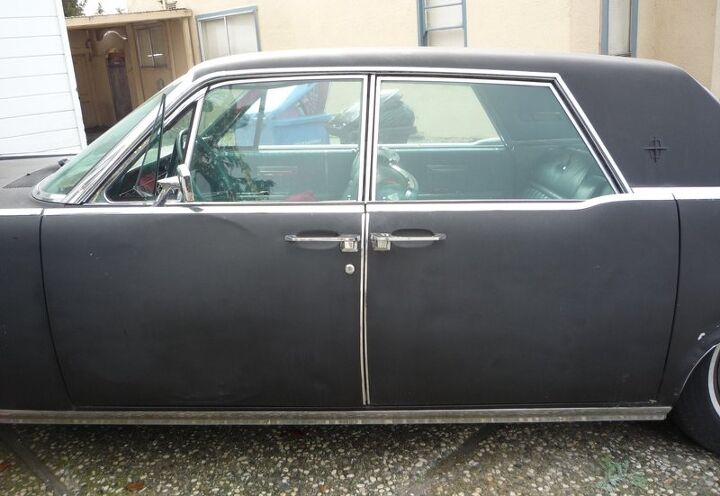#MarkII
Rare Rides Icons: The Lincoln Mark Series Cars, Feeling Continental (Part X)
We resume our tale of the Mark series cars today, during a period of recovery for Lincoln and their Continental lineup. The introduction of all-new unibody Lincolns in 1958 saw questionable over-the-top styling debut right at the start of a sharp recession. Most people didn't enjoy the looks of the new Mark III. Lincoln toned down the glitz for the '59 models, with better-integrated styling cues here, and less bulbous sheet metal there.
A new naming scheme arrived in 1959, Mark IV Continental, as Continental became a version of Mark. At the same time, Ford attempted to take the Continental upscale via the introduction of the more spacious (but not longer outside) Mark IV Continental Town Car and Limousine.
With a better US economy, Lincoln improved its sales figures considerably in 1959. However, the portion of those sales that were Continental models dropped by almost 12 percent. However, given all the millions Ford poured into its new Lincoln models it was not prepared to ditch them after just two years. There was a third year of the unibody Mark, with the highest series number yet: V.
Rare Rides Icons: The Toyota Cressida Story (Part IV)
We’ve come to the end of our Cressida journey, and the short-lived fourth generation. Conservative and staid as ever, Cressida’s final entry was squeezed out of the lineup from above and below: The crushing weight of Lexus came down upon the late Eighties Cressida shortly after its introduction, while Camry smashed it from below. Put on your Urban Sombrero and let’s go.
Rare Rides Icons: The Toyota Cressida Story (Part III)
Today we find ourselves in the third installment of Toyota Cressida coverage. The first Cressida bowed in 1978 with curvy European styling influences and was a more luxurious take of the Corona Mark II with which North American consumers were already familiar. After a short run from 1978 through 1980, a second-generation Cressida was introduced for ’81. It pursued a much more traditional three-box sedan shape, and looked quite Japanese despite marketing statements about how it was “European looking.”
Under the conservative shape were a number of whiz-bang electronic features, all applied to an interior that was redesigned solely for the American market Cressida. The second Cressida was more successful than the first, and new tech features like electronic fuel injection made it more desirable. After another short model run from 1981 to 1984, it was time for the third generation Cressida. The new one in 1985 was even more conservatively styled than the two that came before it. Say hello to X70.
Rare Rides Icons: The Toyota Cressida Story (Part II)
In Part I of this series we were introduced to Toyota’s Cressida, aka Mark II in almost every other market. A “new” model for the North American market, Cressida picked up where the Corona Mark II left off. The main reason behind the branding change was that Cressida had greater upmarket intentions than the Mark II. When it arrived for 1978 in North America, Cressida wore entirely different styling to its predecessor: Upright, formal shapes replaced the faster-looking curves of the Mark II. The conservative mid-sizer wore a Euro-inspired visage with many Jaguar cues, and the rest of the styling was a mixed bag of American and Japanese flavors.
But the first generation was not long for the world, and after just three model years Toyota released an all-new Cressida. This second edition stuck much closer to Toyota’s typical three-box playbook and added Eighties technology into the bargain. Time for X60.
Rare Rides Icons: The Toyota Cressida Story (Part I)
Our recent Rare Rides Icons coverage of the main quadrant of mid-Eighties Japanese family sedans ( Camry, Accord, Maxima, 626) brought another sedan to mind. Boxy and conservative, it was an upscale offering at a time when Japanese luxury brands simply did not exist. The sedan in question was popular enough for Nissan to target it directly with their Maxima. Presenting the Toyota Cressida, a comfortable luxury experience.
Rare Rides: A 1974 Toyota Corona 2000 GT
Today’s Rare Ride is a case of forbidden fruit. Though North American consumers could buy something similar, this Rare Ride was never on domestic shores as new.
It’s the Toyota Corona 2000 GT, from 1974.
Curbside Classic: 1946 Lincoln Continental – The Most Imitated American Car Ever
This car is a jaw-dropper, a true classic, and a lucky find that rivals the CC logomobile, but it’s misnamed. By all rights, it should be the Edsel American. It was Edsel Ford’s fine taste and encouragement that made the original version of this trend-setting car happen, and in the process created a car that set the template that every American personal luxury coupe/convertible has been trying to measure up to ever since. An aggressive face on a very long hood, a close-coupled body, a short rear deck, and dripping with the aura of exclusivity and sex: a timeless formula. All too few of the endless imitators got the ingredients right, or even close, as our recent Cougar CC so painfully showed. But that didn’t stopped them from trying, just like I never stopped looking for this Continental after I first saw it almost two years ago. It was well worth the effort.























Recent Comments